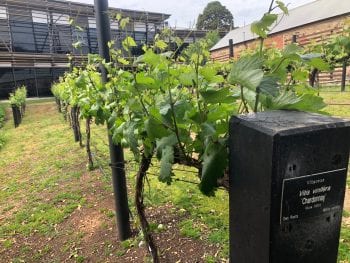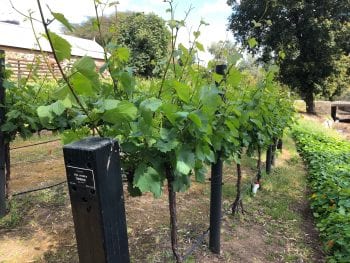 Our brand new 2017 Clare Cabernet Sauvignon was released last weekend… and the feedback has been overwhelmingly positive! Rob has managed to fluke it again (said with tongue planted firmly in cheek)! How on earth does he do it?
Our brand new 2017 Clare Cabernet Sauvignon was released last weekend… and the feedback has been overwhelmingly positive! Rob has managed to fluke it again (said with tongue planted firmly in cheek)! How on earth does he do it?
If you missed the whole story about why Rob chose to work with Cabernet from Clare, you really need to catch up here.
Go on… I’ll wait!
So, it got me thinking. Why do certain varieties work better in some regions than others?
I might be stating the obvious here but…
Different grape varieties do not ripen at the same time.
The reason for that basically comes down to two things. The temperature of the site and the individual difference between varieties. Let me explain…
TEMPERATURE
While all the elements of climate are important in grape production, temperature should be at the top of the list. We’ve seen first hand how temperature affects vine growth in the photos I’ve posted of Chardonnay grown down in Adelaide (left) versus the Adelaide Hills (right).
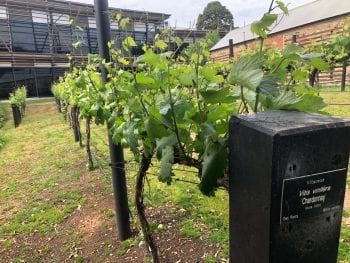
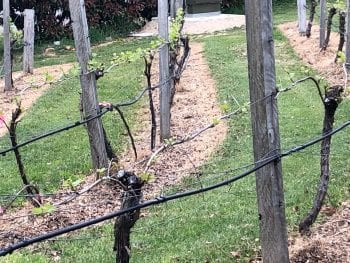
Temperature also forms the basis of the classification system for describing winegrowing regions. You know… Adelaide Hills is a “cool” climate region, Barossa is defined as “warm” climate (on the valley floor at least). It is often the most obvious difference between sites.
You will also hear terms like “continental”, “Mediterranean” and “maritime” when it comes to describing climate. All that really does is add another dimension to the description of the climate of a region. It helps to understand the range of fluctuations in temperatures during the year. Anyway, let’s not get bogged down in that right now!
VARIETAL DIFFERENCES
The photos I have been bringing you from that little experimental block of vines down the hill should be giving you a pretty good idea that vines do not grow (or ripen when we get to that stage) at the same rate.
Grape varieties can be grouped into early, mid or late ripening varieties. That just means that at any one site the early ripening varieties are normally harvested before other varieties.
Early ripening varieties include Pinot Noir and Chardonnay, while Sauvignon Blanc and Shiraz are classified as mid ripening varieties and Cabernet is a mid to late ripening variety.
So… how do you know which varieties will do well where??
A very clever man by the name of John Gladstones wrote a 300 plus page book on how the environment impacts on viticulture across every region in Australia. So, that’s a pretty good place to start!
He also came up with something called…
Biologically effective day degrees
I am going to do him an absolute disservice in my explanation of what that is (because it is a lot more complicated than this) but it is basically a heat summation index. And all that means is that it is an indication of how much heat a particular vineyard site receives over the growing season. It’s a way of describing the temperature conditions of a vineyard in numbers.
What is also really handy is that we know (thanks to Mr. Gladstones) how many “biologically effective day degrees” are needed for each grape variety to reach a certain sugar level in the grapes (12° Baumé). Here are a couple of examples…
| Variety | Heat summation requirement
(biologically effective day degrees) |
| Pinot Noir | 1150 |
| Chardonnay | 1150 |
| Riesling | 1200 |
| Shiraz | 1250 |
| Cabernet Sauvignon | 1300 |
| Tarrango | 1400 |
Loving our blog? Sign up for weekly updates straight to your inbox here.
Matching variety to region
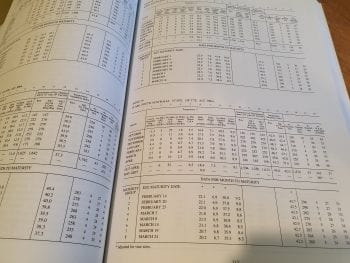
Here are the biologically effective day degrees for the two regions…
Clare Valley: 1,594
Adelaide Hills: 1,183
And as we (now) know, Cabernet likes at least 1,300 to ripen its grapes.
Ta-da! Gosh, I love science.
But don’t take my word for it. Why don’t you pop in for a glass or have a bottle delivered straight to your front door to find out exactly how good a Clare Cabernet can be!
Growing season update
I won’t go through all the varieties this week, but just to keep you in the loop…
Check out what has happened in the Chardonnay vines down on the plains. The photo on the left is the one taken on the 4th October and the one on the right is ten days later on the 14th. While not a great deal has happened regarding the growth stage (they are at E-L 14 on the left and only at E-L 15 on the right) the shoot length and size of the leaves has increased substantially…
